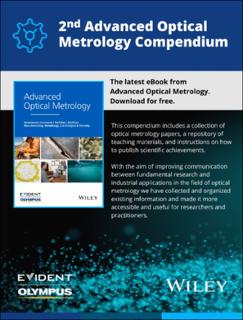| dc.contributor.author | Jiang, Wulyu | |
| dc.contributor.author | Faid, Alaa Yahia Abulgheit A. | |
| dc.contributor.author | Gomes, Bruna Ferreira | |
| dc.contributor.author | Galkina, Irina | |
| dc.contributor.author | Xia, Lu | |
| dc.contributor.author | Lobo, Carlos Manuel Silva | |
| dc.contributor.author | Desmau, Morgane | |
| dc.contributor.author | Borowski, Patrick | |
| dc.contributor.author | Hartmann, Heinrich | |
| dc.contributor.author | Maljusch, Artjom | |
| dc.contributor.author | Besmehn, Astrid | |
| dc.contributor.author | Roth, Christina | |
| dc.contributor.author | Sunde, Svein | |
| dc.contributor.author | Lehnert, Werner | |
| dc.contributor.author | Shviro, Meital | |
| dc.date.accessioned | 2023-02-17T09:15:51Z | |
| dc.date.available | 2023-02-17T09:15:51Z | |
| dc.date.created | 2022-10-04T13:23:02Z | |
| dc.date.issued | 2022 | |
| dc.identifier.citation | Advanced Functional Materials. 2022, 32 (38), . | en_US |
| dc.identifier.issn | 1616-301X | |
| dc.identifier.uri | https://hdl.handle.net/11250/3051830 | |
| dc.description.abstract | Water splitting is an environmentally friendly strategy to produce hydrogen but is limited by the oxygen evolution reaction (OER). Therefore, there is an urgent need to develop highly efficient electrocatalysts. Here, NiFe layered double hydroxides (NiFe LDH) with tunable Ni/Fe composition exhibit corresponding dependent morphology, layered structure, and chemical states, leading to higher activity and better stability than that of conventional NiFe LDH-based catalysts. The characterization data show that the low overpotentials (249 mV at 10 mA cm–2), ultrasmall Tafel slopes (24 mV dec–1), and high current densities of Ni3Fe LDH result from the larger fraction of trivalent Fe3+ and the optimized local chemical environment with more oxygen coordination and ordered atomic structure for the metal site. Owing to the active intermediate species, Ni(Fe)OOH, under OER conditions and a reversible dynamic phase transition during the cycling process, the Ni3Fe LDH achieves a high current density of over 2 A cm–2 at 2.0 V, and durability of 400 h at 1 A cm–2 in a single cell test. This work provides insights into the relationship between the composition, electronic structure of the layer, and electrocatalytic performance, and offers a scalable and efficient strategy for developing promising catalysts to support the development of the future hydrogen economy. | en_US |
| dc.language.iso | eng | en_US |
| dc.publisher | Wiley | en_US |
| dc.rights | Navngivelse 4.0 Internasjonal | * |
| dc.rights.uri | http://creativecommons.org/licenses/by/4.0/deed.no | * |
| dc.title | Composition-Dependent Morphology, Structure, and Catalytical Performance of Nickel–Iron Layered Double Hydroxide as Highly-Efficient and Stable Anode Catalyst in Anion Exchange Membrane Water Electrolysis | en_US |
| dc.title.alternative | Composition-Dependent Morphology, Structure, and Catalytical Performance of Nickel–Iron Layered Double Hydroxide as Highly-Efficient and Stable Anode Catalyst in Anion Exchange Membrane Water Electrolysis | en_US |
| dc.type | Peer reviewed | en_US |
| dc.type | Journal article | en_US |
| dc.description.version | publishedVersion | en_US |
| dc.source.pagenumber | 0 | en_US |
| dc.source.volume | 32 | en_US |
| dc.source.journal | Advanced Functional Materials | en_US |
| dc.source.issue | 38 | en_US |
| dc.identifier.doi | 10.1002/adfm.202203520 | |
| dc.identifier.cristin | 2058403 | |
| cristin.ispublished | true | |
| cristin.fulltext | original | |
| cristin.qualitycode | 2 | |

